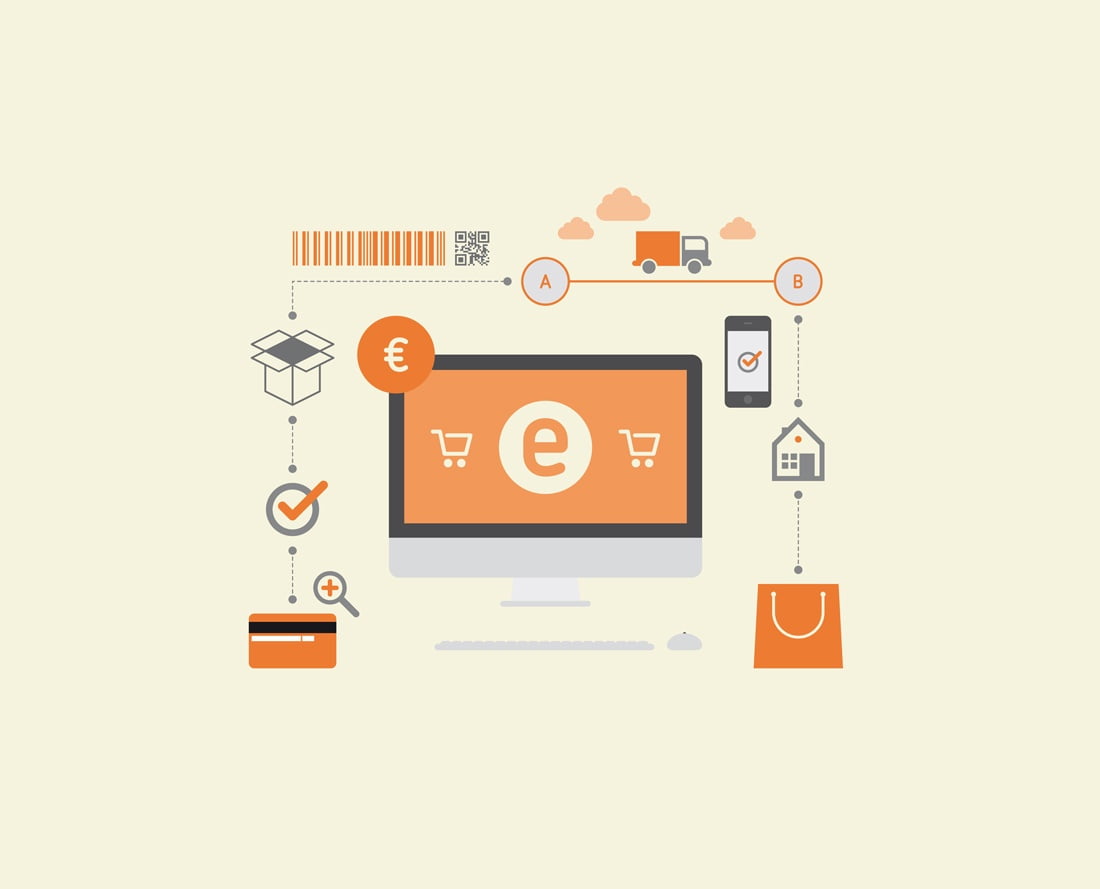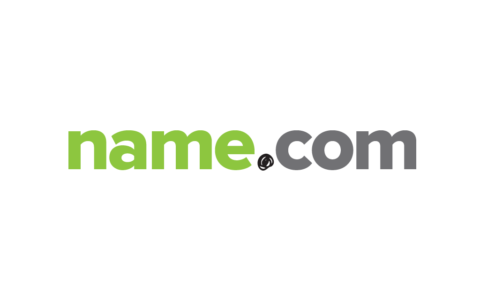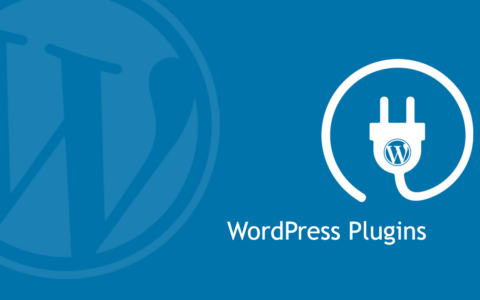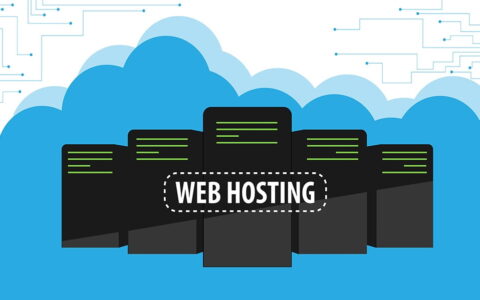
Are you looking to take your business online and start selling products or services? You may have heard of the potential benefits of launching an e-commerce website, but are unsure where to start. In this article, we provide a step-by-step guide on how to get started with creating and launching an e-commerce website today!
Introduction to E-Commerce
In recent years, e-commerce has become increasingly popular as a way for businesses to reach a wider audience and sell their products or services online. If you’re thinking of taking your business online, there are a few things you need to know before getting started.
First, you’ll need to choose an e-commerce platform that’s right for your business. There are many different platforms available, so it’s important to do some research and find one that offers the features and tools you need. Once you’ve chosen a platform, you’ll need to set up your store. This includes creating product listings, adding images and descriptions, setting shipping options, and more.
Once your store is up and running, you’ll need to start promoting it. This can be done through social media, search engine optimization (SEO), pay-per-click advertising, and other marketing strategies. Getting traffic to your store is essential for making sales, so it’s important to invest time and effort into promoting your site.
If you’re ready to take your business online, follow these steps and you’ll be up and running in no time!
What You Need To Get Started
If you’re reading this, chances are you’re considering taking your business online. Congratulations! You’re about to embark on a journey that will open up your business to a whole new world of customers.
But before you get started, there are a few things you need to take care of. Here’s a quick checklist of everything you’ll need to launch your e-commerce website:
1. A domain name: This is the address of your website (e.g., www.com21.com). You’ll need to register your domain name with a registrar such as GoDaddy or Namecheap.
2. Web hosting: This is where your website’s files will be stored. You can find web hosting plans starting at just a few dollars per month. We recommend using a reputable provider such as Bluehost or SiteGround.
3. A shopping cart: This is what allows your customers to add items to their shopping carts and checkout securely. There are many options available, but we recommend using Shopify’s built-in shopping cart for its ease of use and features.
4. Payment processing: You’ll need a way to accept payments from your customers. There are many options available, but we recommend using PayPal for its ease of use and worldwide reach.
5. Shipping: Unless you’re selling digital products, you’ll need to arrange shipping for your orders. This can be done through a number of different shipping providers such as UPS , FedEx, or USPS.
6. Marketing: You’ll need to promote your website in order to drive traffic and sales. This can be done through a variety of channels such as search engine optimization (SEO), social media, email marketing, and more.
7. Customer service: Good customer service is essential in order to keep customers happy and coming back for more. This can be handled through live chat, email support, or phone support depending on your business’ needs.

Shopping Cart Software
There are many different types of software available to help you launch and manage your eCommerce website. Some are better suited for small businesses, while others offer more comprehensive features for larger businesses. In general, shopping cart software provides the following features:
- -Allows customers to browse and search for products on your website
- -Adds products to a virtual shopping cart
- -Calculates shipping and tax charges
- -Provides a secure checkout process
- -Integrates with payment processors such as PayPal or Stripe
- -Generates reports and analytics on sales and customer behavior
When choosing shopping cart software for your eCommerce website, it’s important to consider your business’s specific needs. If you’re just starting out, you may want to choose a less expensive option that offers basic features. As your business grows, you can upgrade to a more robust platform that can handle increased traffic and transactions.
Payment Gateway Setup
Assuming you’ve already chosen the eCommerce platform you want to use for your online store, setting up a payment gateway is one of the next key steps in getting your business online. A payment gateway allows customers to pay for goods and services online using their credit or debit card.
There are many different payment gateway providers available, so it’s important to do some research and choose one that will best suit your needs. Some factors you may want to consider include:
- – Fees: Some providers charge monthly or per-transaction fees, while others have no setup costs or monthly fees.
- – Currencies supported: If you plan on selling to customers in multiple countries, make sure the payment gateway can accept payments in various currencies.
- – Credit cards accepted: Not all payment gateways accept all types of credit cards, so if you want to accept American Express, for example, make sure the provider you choose supports it.
- – Security: Payment security is extremely important, especially if you’re dealing with sensitive customer information like credit card numbers. Choose a provider that offers robust security features such as data encryption and fraud protection.
Once you’ve selected a payment gateway provider, setting up an account and integrating it with your eCommerce platform is usually a straightforward process. Most providers will have detailed instructions on how to do this. Once everything is up and running, you can start accepting payments from customers!
Choosing the Right Platform for Your Business.
If you’re reading this, chances are you’ve already decided to take your business online. Congratulations! You’re about to enter a whole new world of opportunity.
But before you get too excited, there’s one important decision you need to make: which eCommerce platform should you use?
There are dozens of different platforms out there, and choosing the wrong one can be a costly mistake. So how do you know which platform is right for your business?
Here are a few things to consider when making your decision:
1. What type of products are you selling?
Different platforms are better suited for different types of products. For example, if you’re selling physical goods, you’ll need a platform that can handle inventory management and shipping integration. If you’re selling digital products, on the other hand, you won’t need those features.
2. How much control do you want over the look and feel of your store?
Some platforms offer more customization than others. If you want complete control over the design of your store, you’ll need to choose a platform that offers extensive theme and plugin options (like WordPress + WooCommerce). If you’re not concerned with customizing your store beyond the basics, a simpler platform will suffice (like Shopify).
3. How much are you willing to spend?
Platforms range in price from free (WordPress) to hundreds or even thousands of dollars per month (enterprise- level solutions). Determine your budget and find a platform that fits.
4. What features does the platform offer?
Look for features like integrated payment processors, SEO optimization capabilities, customer accounts, and analytics tools. Also consider any additional features you may need, such as product reviews or a blog section.
5. Is the platform easy to use?
Make sure the platform you choose is user-friendly. The last thing you want is to get stuck trying to figure out how to do something simple! Test out the platform’s user interface before committing to it.
By asking yourself these questions, you should be able to narrow down your options and make an informed decision about which eCommerce platform is right for your business. Good luck!
Setting Up Your Website
Assuming you already have a domain name and web hosting, you can begin setting up your website. If not, see our guide on how to buy a domain name and set up web hosting.
1) Choose a platform: WordPress is the most popular site-building platform in the world, but it’s not the only option. Shopify is another popular eCommerce platform that enables you to build a professional online store quickly and easily.
2) Find a theme: Once you’ve chosen your platform, it’s time to find a theme or template for your site. This will determine the overall design and layout of your site. For WordPress, there are thousands of themes available from both official and third-party sources. For Shopify, you can choose from over 100 themes designed specifically for eCommerce businesses.
3) Install plugins: Plugins are like apps for your website – they add extra features and functionality. For example, with WordPress, there are plugins available to add an eCommerce store, contact form, social media integration, etc.
4) Create pages: Your website will need different pages (e.g., Homepage, About Us, Products/Services, Contact Us). Each page should have unique content that is relevant to what you do and what you want visitors to do when they land on that page (e.g., buy products, fill out a form, etc.).
5) Add content: Once you’ve created your pages, it’s time to add content. This could include text, images, videos, audio files, etc. It should also be optimized for search engines (SEO).
6) Test and launch: Finally, you need to test your website to make sure everything is working correctly. Once you’re happy with the results, you can launch your site and start promoting it.
Design and Layout of Website
Assuming you already have a domain name and hosting account, you’re ready to start building your eCommerce website. The design and layout of your site will be one of the most important aspects in determining whether or not customers stay on your site and make a purchase.
Your website’s design should be clean and simple, with easy navigation and a focus on your products or services. The layout should be such that visitors can easily find what they’re looking for without getting lost in a sea of information.
In terms of specific design elements, consider using high-quality images and videos to showcase your products or services. Use positive customer reviews and testimonials to build trust with potential customers. And make sure to include calls-to-action (CTAs) throughout your site to encourage visitors to take the next step, whether it’s making a purchase, signing up for a newsletter, or requesting more information.
Add Products to your Site
Assuming you’ve already built your e-commerce website, it’s time to start adding products! This can be a daunting task if you have a lot of products, but we’ll break it down into simple steps to make it easy.
1. Log in to your e-commerce platform and go to the ‘Products’ section.
2. Start adding your products one at a time. For each product, you’ll need to enter basic information like the product name, price, and a photo.
3. Once you’ve added all your products, take some time to organize them into categories (e.g., Men’s Clothing, Women’s Clothing, Accessories). This will make it easier for customers to find what they’re looking for on your website.
4. That’s it! You’re now ready to start selling online!
Promoting Your Website and Increasing Traffic.
Assuming you’ve already built your e-commerce website and are ready to start promoting it, there are a number of ways to go about increasing traffic and getting more customers. Some of the most effective methods include search engine optimization (SEO), social media marketing, and email marketing.
SEO is all about optimizing your website and its content to rank higher in search engine results pages (SERPs). This can be done through on-page optimization, such as using relevant keywords in your titles and descriptions, as well as off-page SEO tactics like link building and guest blogging.
Social media marketing is another great way to drive traffic to your website. By creating engaging content and sharing it on popular social media platforms like Facebook, Twitter, and Instagram, you can reach a wider audience and get them interested in what you’re selling.
Email marketing is also a powerful tool for driving traffic to your e-commerce site. By sending out regular newsletters with exclusive deals and discounts, you can encourage customers to keep coming back to your store. Just make sure to include a strong call-to-action (CTA) so recipients know exactly what to do next.
Analyzing Results and Making Adjustments.
The most important part of launching an e-commerce website is analyzing the results and making necessary adjustments. This will help you determine what is working and what needs to be changed in order to improve your online business.
There are a few key metrics that you should focus on when analyzing your results:
-Number of visitors: This is a good indicator of how well your marketing efforts are paying off. If you see a decrease in the number of visitors, it may be time to adjust your marketing strategy.
-Conversion rate: This measures how many visitors are taking the desired action on your website, such as making a purchase or signing up for a newsletter. A low conversion rate can indicate that your website is not user-friendly or that your products are not appealing to customers.
-Average order value: This tells you how much customers are spending per transaction. If you see a decline in the average order value, it may be due to changes in customer behavior or competition.
-Customer satisfaction: This can be measured through surveys or customer reviews. It’s important to keep track of this metric because it will give you insight into how well your business is doing overall.
Once you have collected data on these metrics, you can start to make adjustments to improve your results. For example, if you see that the average order value has decreased, you may want to offer discounts or promotions to encourage customers to spend more. Or, if customer satisfaction is low, you may want to provide better customer service.
No matter what adjustments you make, it’s important to continue tracking your results and making data-driven decisions to ensure that your e-commerce website is successful.
Conclusion
E-commerce has become a necessity in the modern business world, and if you want to stay competitive it is important that you take your business online. By following this step-by-step guide, you will now have all the information you need to get started with an e-commerce website today. From choosing a platform to setting up payment solutions and marketing your products, we have provided everything for launching an effective and successful online store. So what are you waiting for? It’s time to take your business online!
Author:Com21.com,This article is an original creation by Com21.com. If you wish to repost or share, please include an attribution to the source and provide a link to the original article.Post Link:https://www.com21.com/e-commerce.html










